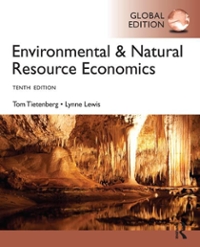Question
3 equation model (Carlin and Soskice, 2005) Assume that the IS curve of an economy is given by the following equation: yt = 100 -
3 equation model (Carlin and Soskice, 2005)
Assume that the IS curve of an economy is given by the following equation:
yt = 100 - 4rt-1;
The economy is currently in the full-employment (long-run) equilibrium where yt = ye = 80 and inflation is at the target level: t = * = 2. The short-run Phillips curve is given by
t = t-1 + 1/10 (yt - ye).
The Central Bank selects monetary policy to minimize the following loss function:
Lt = (yt - ye)2 + (t - * )2 ;
(a) What is the value of the stabilizing interest rate (rs) in this equilibrium?
(b) Derive the monetary policy rule/monetary response function in terms of the parameter .
(c) If the economy receives a temporary inflation shock that shifts the short-run Phillips curve upward to t = 4 + t-1 + 1/10 (yt - ye) (the shock only occurs one period), graphically show the new short-run Phillips curve and derive/calculate y, r, and for the following two periods if =2 and if =5.
(d) Now assume instead that there is a permanent shock that hits the IS curve and it causes it to shift to yt = 120 - 4rt-1. Calculate the new level of output and the rate of inflation directly after the IS shock (assuming rs has not changed due to the time lag). Further, derive/calculate y, r, and for the following two periods if =2 and if =5.
(e) Graphically illustrate how the economy returns to a stable equilibrium.
Step by Step Solution
There are 3 Steps involved in it
Step: 1

Get Instant Access to Expert-Tailored Solutions
See step-by-step solutions with expert insights and AI powered tools for academic success
Step: 2

Step: 3

Ace Your Homework with AI
Get the answers you need in no time with our AI-driven, step-by-step assistance
Get Started


